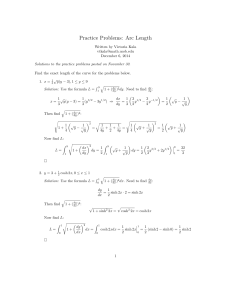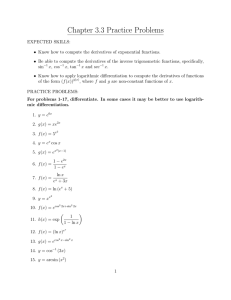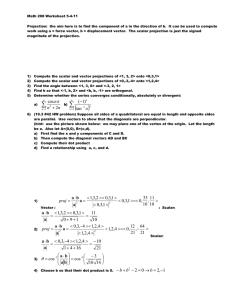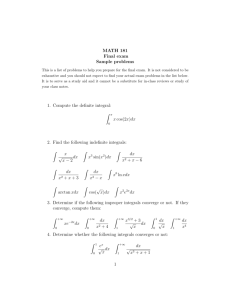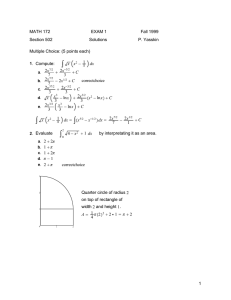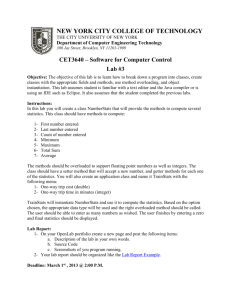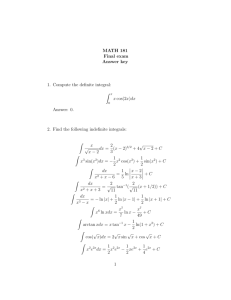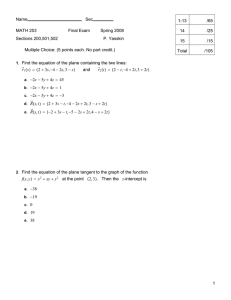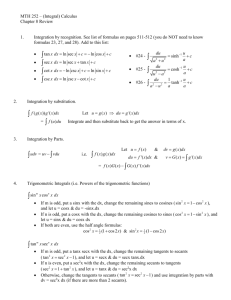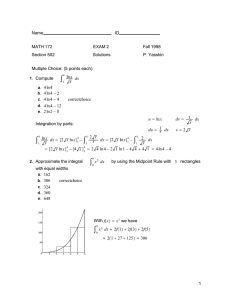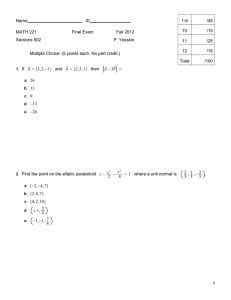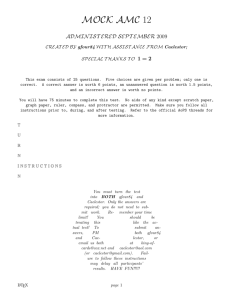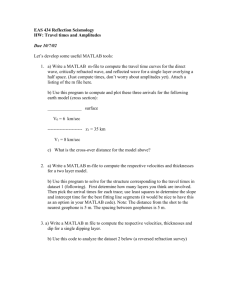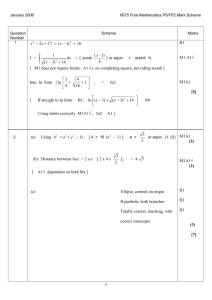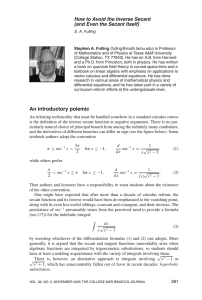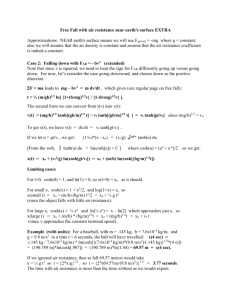quiz4
advertisement
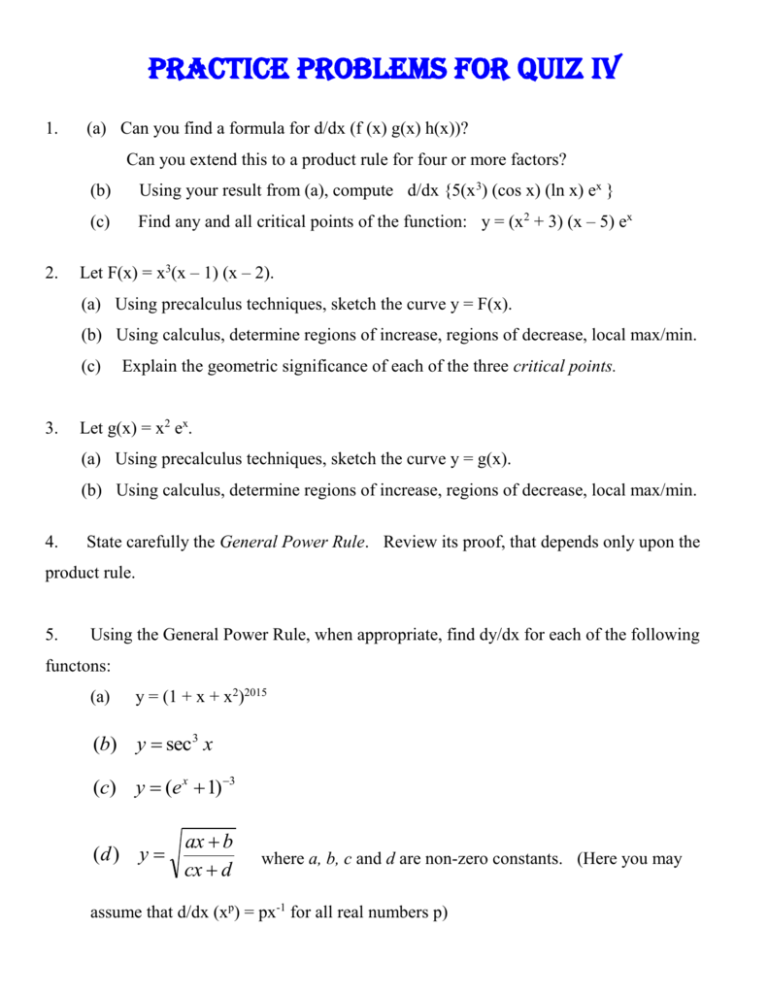
Practice problems for QUIZ IV
1.
(a) Can you find a formula for d/dx (f (x) g(x) h(x))?
Can you extend this to a product rule for four or more factors?
2.
(b)
Using your result from (a), compute d/dx {5(x 3) (cos x) (ln x) ex }
(c)
Find any and all critical points of the function: y = (x 2 + 3) (x – 5) ex
Let F(x) = x3(x – 1) (x – 2).
(a) Using precalculus techniques, sketch the curve y = F(x).
(b) Using calculus, determine regions of increase, regions of decrease, local max/min.
(c)
3.
Explain the geometric significance of each of the three critical points.
Let g(x) = x2 ex.
(a) Using precalculus techniques, sketch the curve y = g(x).
(b) Using calculus, determine regions of increase, regions of decrease, local max/min.
4.
State carefully the General Power Rule. Review its proof, that depends only upon the
product rule.
5.
Using the General Power Rule, when appropriate, find dy/dx for each of the following
functons:
(a)
y = (1 + x + x2)2015
(b) y sec 3 x
(c) y (e x 1) 3
(d ) y
ax b
cx d
where a, b, c and d are non-zero constants. (Here you may
assume that d/dx (xp) = px-1 for all real numbers p)
2
(e) y tan x
5
( f ) y (sinh x cosh x)1789
(g) y
6.
7.
8.
1
x 5 99
State the Chain Rule.
Explain why (d/dx) ln x = 1/x.
Using the Chain Rule, when appropriate, compute dy/dx for each of the following:
(b)
y = sec(ex + 4x + 1789)
(c)
y e tan x
(d)
y = ln(ax + b), where a and b are positive constants.
(e) y = (ln x)4
(f)
y = ln(x4)
(g)
y = ln(ln(x)
(h)
y = ln(ln(lnx))
(i)
y = cosh(sinh(3x+1))
(j)
y = cos(sec(x))
(k)
y = tan(1/x)
9.
Let y = u3 + 1 and u = 5 sin x.
Using the chain rule, compute dy/dx
10.
Let z = sin u and u = 5 + ex.
Compute dz/dx.
3
11.
Let f ( x) e x . Compute f (2)(x), the second derivative of f.
12.
Let g(x) = cos(5x). Compute g(2015)(x).
13.
(a) Given y
2
ln x
, compute d2y/dx2.
x
(b)
Given y = 5x , compute dy/dx.
(c)
Given y = log13 x, find dy/dx.
14. Sketch the graph of each of the following functions, using the first two stages of our plan.
Be sure to identify the domain first.
(a) y = x + 1/x
(b) y 9 x 2
(c) y x10 10 x
(d ) y x 3 6 x 2 1 ]
(e) y x 3 x 5 x 7
( f ) y x2
1
x2
15. Using implicit differentiation, find dy/dx for each of the following implicitly defined
curves:
(a)
xy + x + y = y sin x
(b)
tan x + sec y = x + y + 2015
(c)
xy4 – tan x = ey + 1234
4
16.
Find an equation of the tangent line to the bifolium
4x4 + 8x2y2 – 25x2y + 4y4 = 0
at the point P = (2, 1).
2.0
1.5
1.0
0.5
0.0
0.5
1.0
2
1
0
1
2
Who has not been amazed to learn that the function y = ex, like a phoenix rising again from
its own ashes, is its own derivative?
- Francois le Lionnais, Great Currents of Mathematical Thought, vol. 1, Dover
Publications
I turn away with fright and horror from the lamentable evil of functions which do not have
derivatives.
-
Charles Hermite (in a letter to Thomas Jan Stieltjes)
